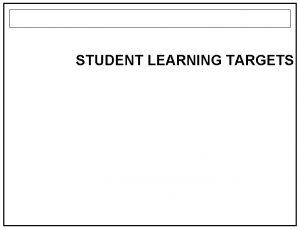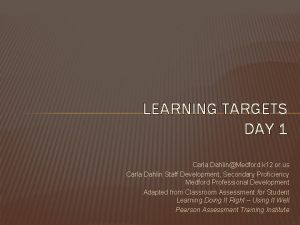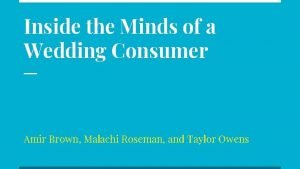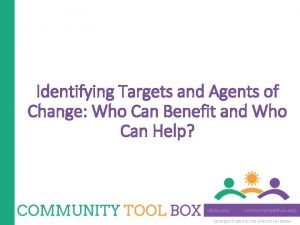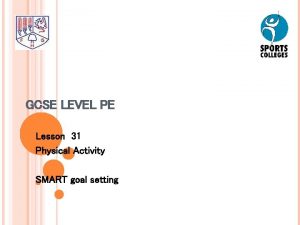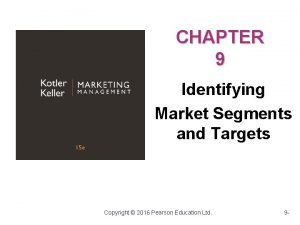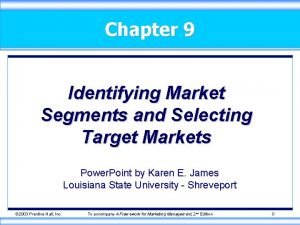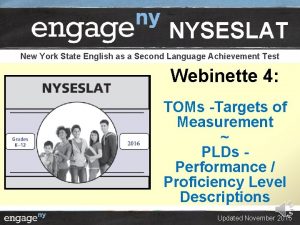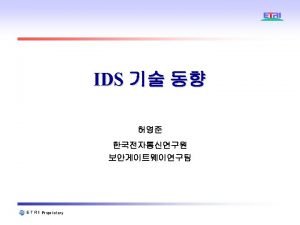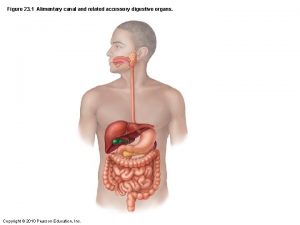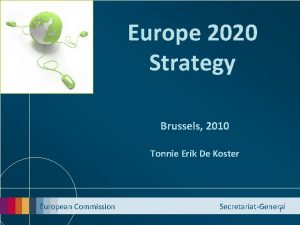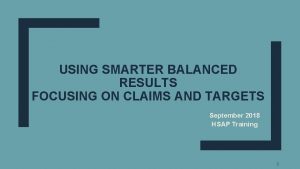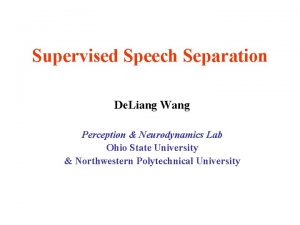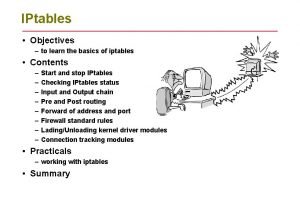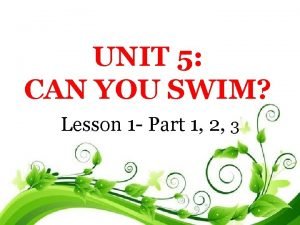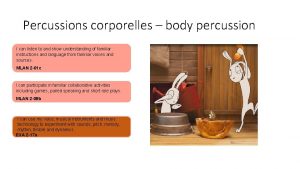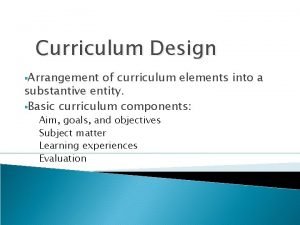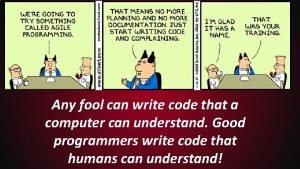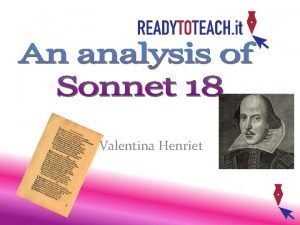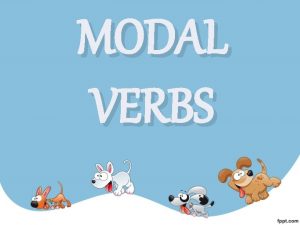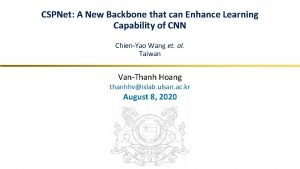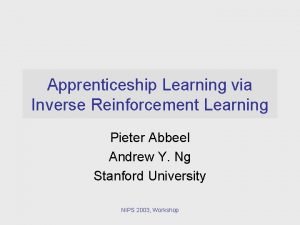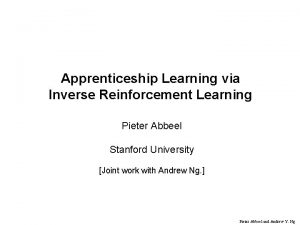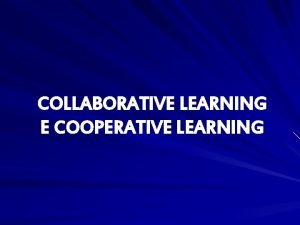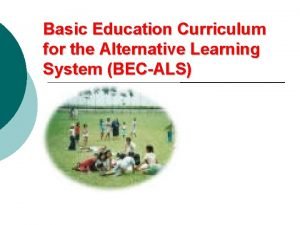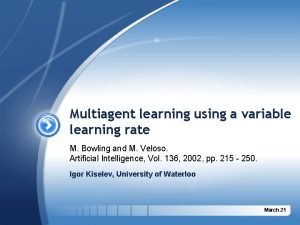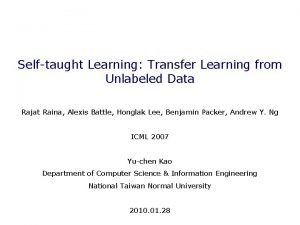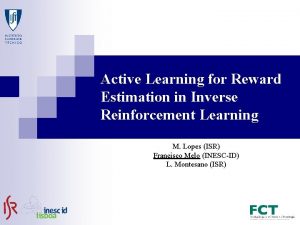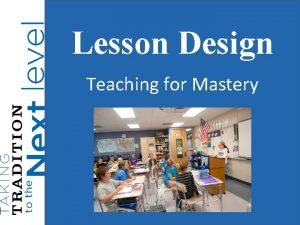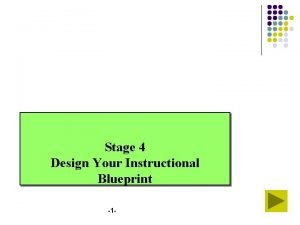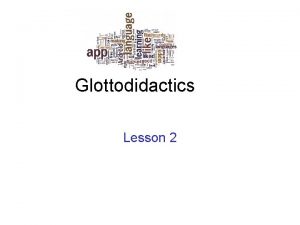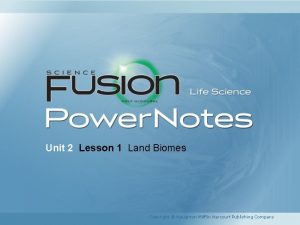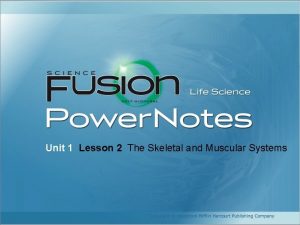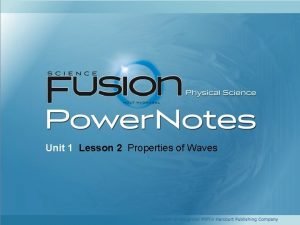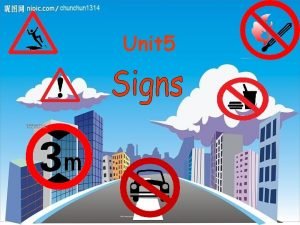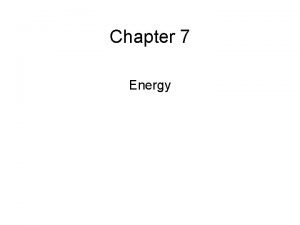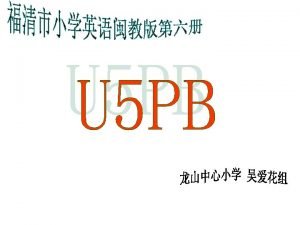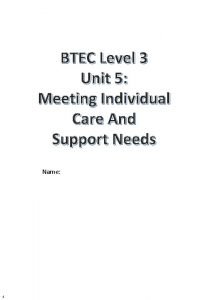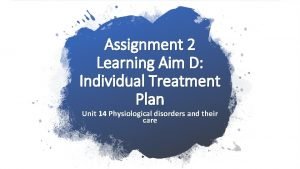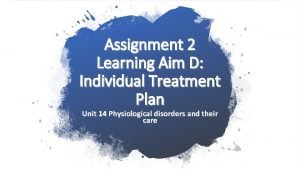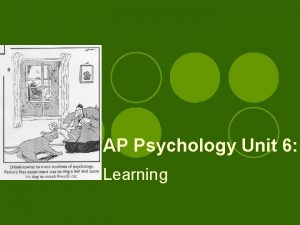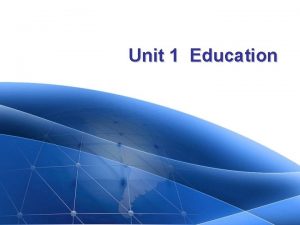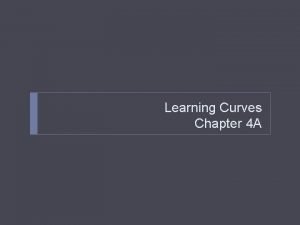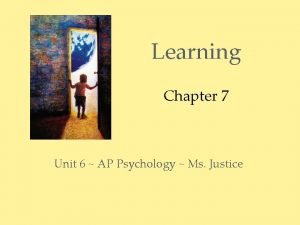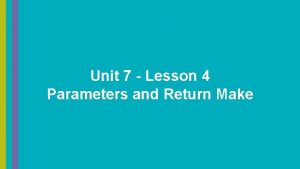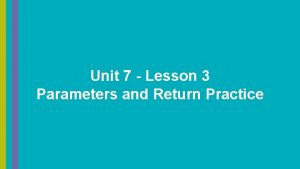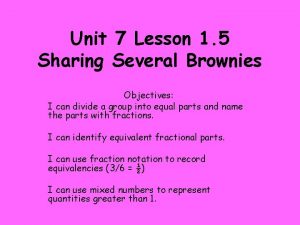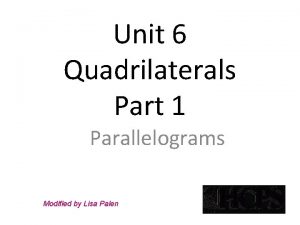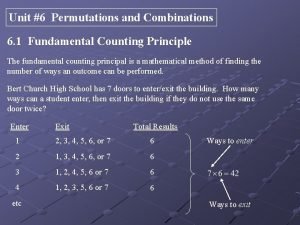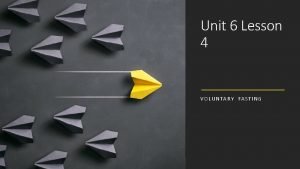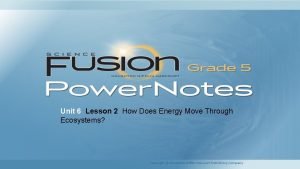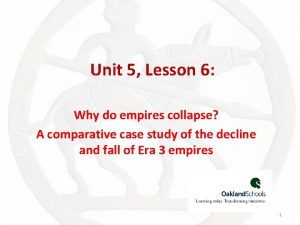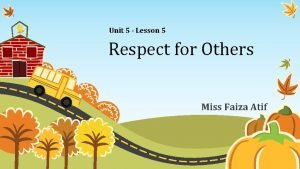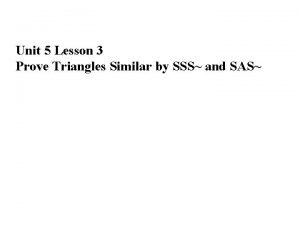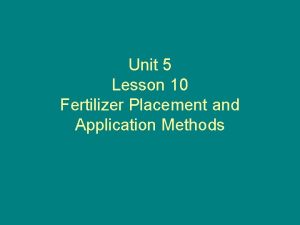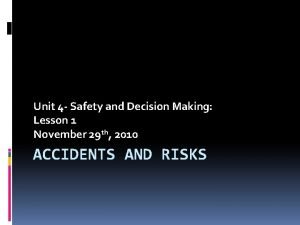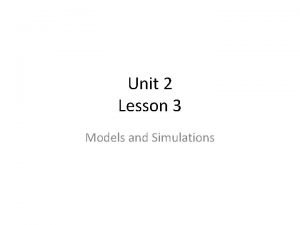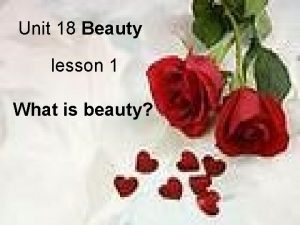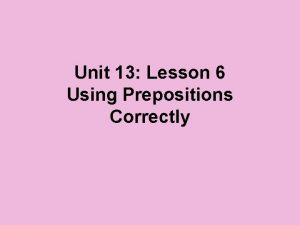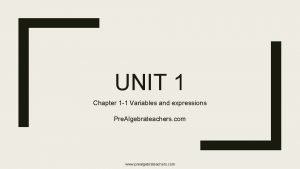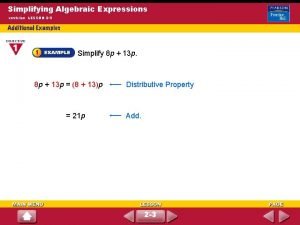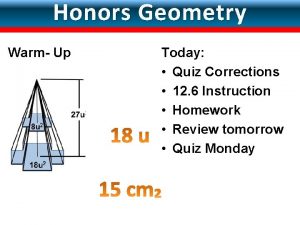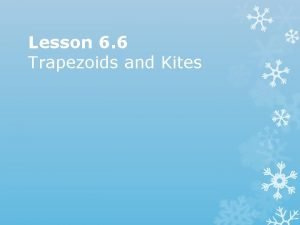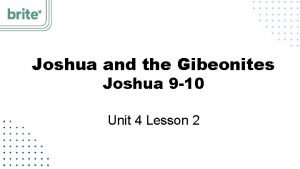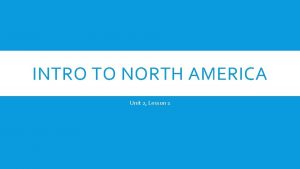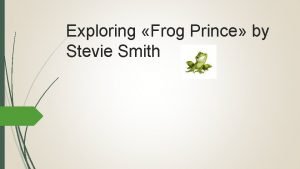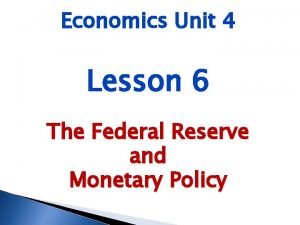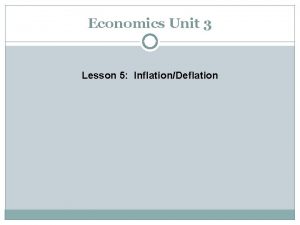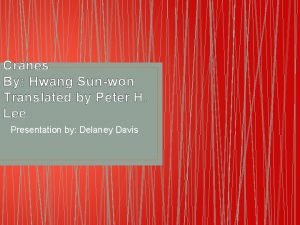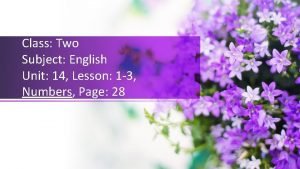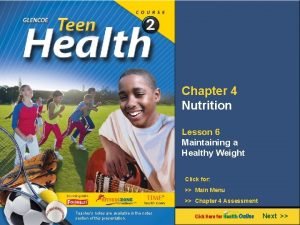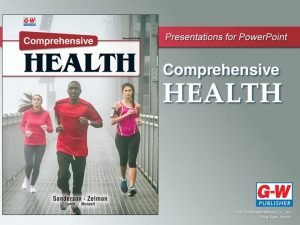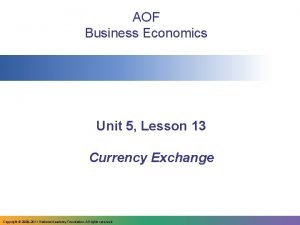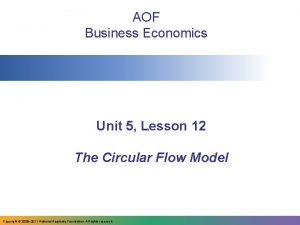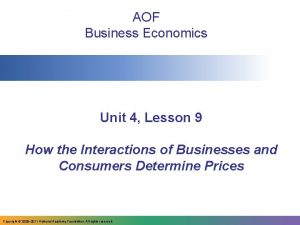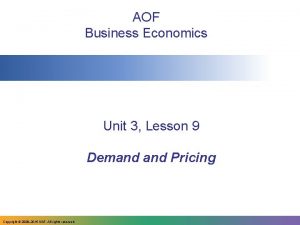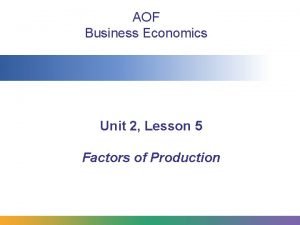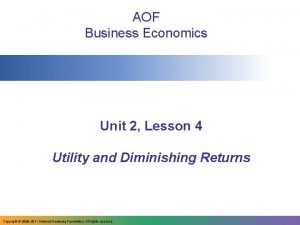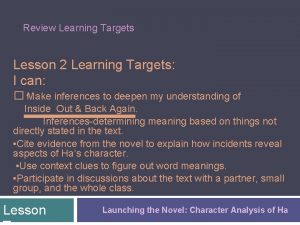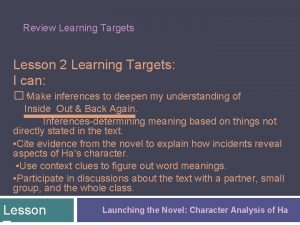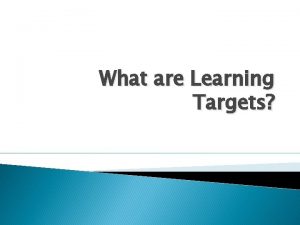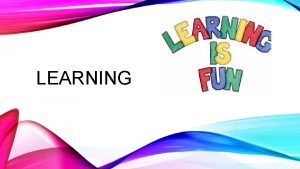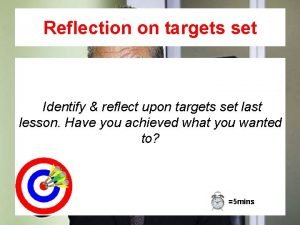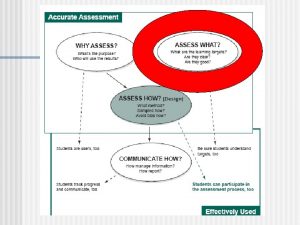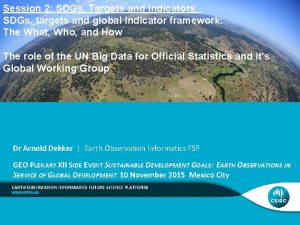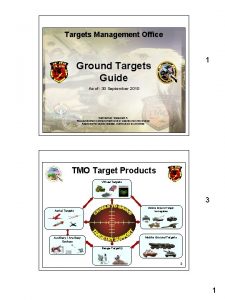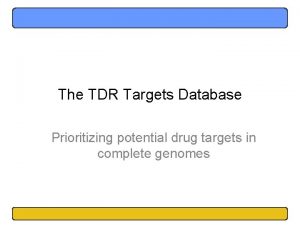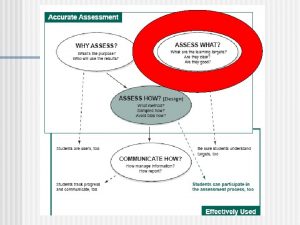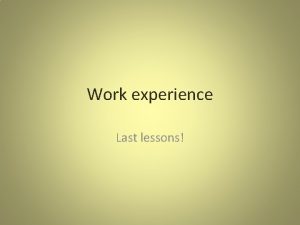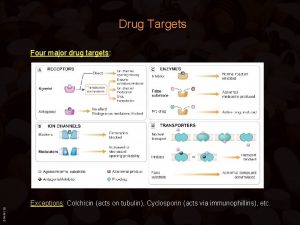Unit 2 Lesson 1 Learning Targets I can






































































































































































- Slides: 166

Unit 2, Lesson 1

Learning Targets • I can define historical fiction. • I can describe the geographical setting of Esperanza Rising. • I can describe the historical setting of Esperanza Rising.

Today we will begin… Esperanza Rising Look at the cover. What do you notice? What do you wonder?

Let’s talk about setting! • Listen and follow along as I read pages 1 -3. • Talk with a partner: • What is this short chapter mostly about?

Close Readers… • Read the text slowly at least twice. • Circle words you aren’t sure of and try to figure them out. • Reread, annotate, and underline key vocabulary. • Talk to each other about what you think it means. • Read to summarize or answer specific questions.


Visualize the Geographical Setting • Read the 1 st paragraph silently. * “What is a vineyard? ” * “What are gentle slopes? ” * “What might Papa mean when he says, ‘Our land is alive’”?

“Jigsaw Protocol” • Let’s jigsaw to build background knowledge about Mexico.

Task • Read one section of the document • Take notes on the note catcher • Share with the group

Revisit Learning targets I can define historical fiction. I can describe the geographical setting of Esperanza Rising. I can describe the historical setting of Esperanza Rising.

Unit 2, Lesson 2

Learning Targets • I can discuss answers to questions with my triad and provide evidence to explain my ideas. • I can answer questions about the setting of the novel Esperanza Rising based on evidence from the text. • I can answer questions about the main character, Esperanza, based on evidence from the text.

Task 1 - Chapter 1 Questions • 1. Describe the geographical setting of Esperanza Rising. What is it like where Esperanza lives? Use details from the text to support your answer. • 2. What is Esperanza’s relationship with her papa like? How do you know? • 3. What is Esperanza’s life like in Mexico?

Close Readers… • Read the text slowly at least twice. • Circle words you aren’t sure of and try to figure them out. • Reread, annotate, and underline key vocabulary. • Talk to each other about what you think it means. • Read to summarize or answer specific questions.

Things to do while we read Esperanza Rising • • Rereading Thinking about what a chapter is mostly about Paying attention to chapter titles Using context clues to figure out new words Inferring using text clues Inferring about characters Thinking about the challenges characters are facing, and how they overcome them • Thinking about metaphors • Making connections to the UDHR


Task 2 – Close Reading • Listen as I read pages 4 -6. Discuss with your table what the first few pages of chapter 2 were about. • Reread through the break on page 8. Keep Question #1 in mind as you read. Mark your evidence with an evidence flag.

Close Reading Continued • Listen and follow along as I read pages 8 -12. • Think about question 2 as I read. • Use your evidence flags to mark evidence that answers the question as you follow along.

On Your Own • Try to answer the rest of the questions.

Revisit Learning Targets • I can discuss answers to questions with my triad and provide evidence to explain my ideas. • I can answer questions about the setting of the novel Esperanza Rising based on evidence from the text. • I can answer questions about the main character, Esperanza, based on evidence from the text.

Unit 2, Lesson 3

Learning Targets • I can answer comprehension questions based on • • text from Esperanza Rising that I have read independently. I can identify situations in Esperanza Rising where a character’s human rights are challenged. I can make inferences from the text about Esperanza, Mama, and Abuelita. I can use context clues to help me determine the meaning of words in Esperanza Rising. I can write to explain my thinking about the characters in Esperanza Rising.

Task 1 - Read Chapter 3

Focus Questions • 1. At the start of Chapter 3: “Las Papayas, ” what does Esperanza dream about? • 2. What does Tío Luis ask Mama to do? • 4. What is Miguel planning to do now? • 5. What did Señor Rodriguez bring for Esperanza’s birthday?

Things to do while we read Esperanza Rising • • Rereading Thinking about what a chapter is mostly about Paying attention to chapter titles Using context clues to figure out new words Inferring using text clues Inferring about characters Thinking about the challenges characters are facing, and how they overcome them • Thinking about metaphors • Making connections to the UDHR

Task 2 – Close Reading • Close Reading of Pages 22– 23 • “The text says … so I infer that …”

Task 3 - Revisit Human Rights • Take out the UDHR. • Think about the events in Chapters 2 and 3 • “What challenges did the characters in this chapter face? ” • “Where are there examples specifically of human rights challenges? ”

Task 4 – Reading Journal • Character information • Make a list of things that you know about each of the characters

Revisit Learning Targets • I can answer comprehension questions based on • • text from Esperanza Rising that I have read independently. I can identify situations in Esperanza Rising where a character’s human rights are challenged. I can make inferences from the text about Esperanza, Mama, and Abuelita. I can use context clues to help me determine the meaning of words in Esperanza Rising. I can write to explain my thinking about the characters in Esperanza Rising.

Unit 2 , Lesson 4

Task 1 – Read Chapter 4

Chapter 4 Focus Questions • Why did Mama wake Esperanza up? • Who does everyone think is to blame for what happened? • What does Mama change her mind about? • Where do Mama, Abuelita, and Esperanza decide to go?

Learning Targets • I can answer comprehension questions based on text from Esperanza Rising that I have read independently. • I can make inferences from the text about the characters in Esperanza Rising. • I can write to explain my thinking about the characters in Esperanza Rising.

Task 2 – Character Study In your group use the Jigsaw handout and your copy of Esperanza Rising to write notes about Mama, Abuelita, and Miguel. • You will focus on challenges they faced and how they respond to their challenges.

Task 3 – Making Connections • Compare and contrast Esperanza’s responses to challenges to the responses of the other characters.

Revisit Learning Targets • I can answer comprehension questions based on text from Esperanza Rising that I have read independently. • I can make inferences from the text about the characters in Esperanza Rising. • I can write to explain my thinking about the characters in Esperanza Rising.

Unit 2, Lesson 5

Learning Targets • I can answer comprehension questions based on text from Esperanza Rising that I have read independently. • I can summarize the main ideas in an informational text about California in the 1930 s.

Task 1 - Read Chapter 5

Focus Questions • How does Esperanza travel to the train station? • How did Papa reward Miguel when he scared away the bandits? • What does the little girl on the train want Esperanza to show her? • What does Carmen, the woman on the train, give Mama?

Brief Discussion • What do you notice about the chapter titles? • How has the setting changed since the start of the book?

California in the 30’s - Images

Depression Era: 1930 s: Repatriation for Mexican & Filipino Farm Workers • http: //www. museumca. org/pictureth is/pictures/stoop-labor








California Cultures http: //www. calisphere. universityofcalifornia. e du/calcultures/ethnic_groups/subtopic 3 b. html







Task 3 - Summaries • Each group will get one document and a summarizing sheet. • Your job is to read the passage and fill out the summarizing sheet as a group. • Note: There are three texts total- so if your group finishes, you will move on to a second or third document.

Task 4 – Whole Class Share • California • Immigrating from Mexico • The Great Depression of the 1930 s

Think Pair Share • How do you think Esperanza’s life will be different in California? • Support your thinking with at least one piece of information you learned today and one detail from Esperanza’s train journey described in Chapter 5.

Revisit Learning Targets • I can answer comprehension questions based on text from Esperanza Rising that I have read independently. • I can summarize the main ideas in an informational text about California in the 1930 s.

Unit 2, Lesson 6

Task 1 – Read Chapter 6

Focus Questions • Who meets Esperanza at the train station in Los Angeles? • How many babies are in Isabel’s family? • Esperanza rides in a truck on the highway to the camp. What does she see during the drive? • How does Marta treat Esperanza when they first meet?

Learning Target • I can use close reading to answer comprehension questions based on text from Esperanza Rising.

Things to do while we read Esperanza Rising • • Rereading Thinking about what a chapter is mostly about Paying attention to chapter titles Using context clues to figure out new words Inferring using text clues Inferring about characters Thinking about the challenges characters are facing, and how they overcome them • Thinking about metaphors • Making connections to the UDHR

Task 2 – Close Reading • Turn to page 81

On page 81, the text says: “Esperanza and Mama, their faces shiny with grime and perspiration, looked tired and wilted as they slumped with even the slight weight of their valises. ” Valise means “suitcase. ” Based on context, what do you think the other italicized words in this sentence might mean (perspiration, wilted, slumped)? Why might the author have chosen specifically to use the word “wilted” to describe Esperanza and her mother?

Turn to page 90 • On page 90, Esperanza is in California, driving to the camp. • What specifically does she see? • How does she react to this new setting? • Find details from the text to explain your answer.

At the very start of the novel, we meet Esperanza in Mexico as a little girl, with her father. How is Mexico different from California? What specific words or phrases in Chapter 6 of the novel help you understand the contrast between the two settings? In other words, what specific language does the author use to help us understand how different California is from Mexico? Use evidence from the text in your answer.

Esperanza meets two new girls in this new setting: Isabel and Marta. Compare and contrast how the two girls treat Esperanza, citing evidence from the text. What do you predict will happen between Esperanza and these two girls?

On page 99, Marta tells Esperanza, ‘Just so you know, this isn’t Mexico. No one will be waiting on you here. ’ What does she mean? How is Esperanza’s life different in California? Cite details from the text to support your answer.

Revisit Learning Targets • I can use close reading to answer comprehension questions based on text from Esperanza Rising.

Unit 2, Lesson 7

Task 1 - Read Chapter 7

Focus Questions • What does Esperanza think of their cabin when she first sees it? • What work will Esperanza be doing? • What does Mama do to her hair? • What happens when Esperanza tries to sweep the platform?

Learning Targets • I can use context clues to help me determine why the author chose specific words in Esperanza Rising. • I can determine what metaphors the symbols of the chapter titles represent in Esperanza Rising. • I can explain how Isabel responds to challenges in her life. • I can describe how the points of view of Esperanza and Isabel influence the description of events.

Things to do while we read Esperanza Rising • • Rereading Thinking about what a chapter is mostly about Paying attention to chapter titles Using context clues to figure out new words Inferring using text clues Inferring about characters Thinking about the challenges characters are facing, and how they overcome them • Thinking about metaphors • Making connections to the UDHR

Task 2 - Text Dependent Questions • Read aloud pages 116– 117 • “What does visualize the memory mean? ” • “What is Esperanza doing with her mind in order to help her figure out how to sweep? ”

page 117 • “What does tittering mean? How can we figure out based on the context? ” • “How does Esperanza feel after Marta calls her Cinderella? What does she do? ” • “What specific words in the text help you know what Esperanza is feeling? ”

Task 3 - Visualizing • Listen as I re-read the first two paragraphs of the chapter “Las Cebollas” (page 100). • Close your eyes and listen as you read the description of the camp. • Make a sketch of what you think the camp looks like.

Think Pair Share • How would it be different if Isabel were describing it? • How does Esperanza respond differently to the challenges of life in the camp than Isabel does?

Revisit learning Targets • I can use context clues to help me determine why the author chose specific words in Esperanza Rising. • I can determine what metaphors the symbols of the chapter titles represent in Esperanza Rising. • I can explain how Isabel responds to challenges in her life. • I can describe how the points of view of Esperanza and Isabel influence the description of events.

Unit 2, Lesson 8

Task 1 – Read Chapter 8

Focus Questions • What is the surprise that Alfonso and Miguel have for Esperanza and Mama? • What does Esperanza learn to do by herself for the first time in this chapter? • What does Isabel want to bring home from the fiesta?

Learning Targets • I can interpret two big metaphors in Chapter 8, “Las Almendras, ” in Esperanza Rising. • I can explain what it means to find theme of a book or story. • I can identify themes in Esperanza Rising.

What is theme? • Theme refers to the central idea or underlying message of the text. Theme is rarely stated in the text –instead, the reader must usually consider the plot, characters, and setting to infer theme.

• Theme is often confused with other literary elements such as Plot or Topic (or Subject) • However, the Theme of a piece of literature is a message about people, life, and the world we live in that the author wants the reader to understand. • The Topic, on the other hand, is the main idea or gist of the story.

• For example, think about the Topic and Theme of the classic story Cinderella. • If you are describing the TOPIC, you might say it is a story about a poor girl who marries a prince. • But if you are describing the THEME, it could be described as an example of karma or good things happening to good people.

Charlotte’s Web • Topic • Theme(s) Self-Sacrifice A talking spider helps a True Friendship pig. Perseverance

• The theme can also be described in terms of a moral, or message, or lesson that the reader can gain from the piece of literature. • The Tortoise and the Hare is a lesson in perseverance.

Things to do while we read Esperanza Rising • • Rereading Thinking about what a chapter is mostly about Paying attention to chapter titles Using context clues to figure out new words Inferring using text clues Inferring about characters Thinking about the challenges characters are facing, and how they overcome them • Thinking about metaphors • Making connections to the UDHR

Task 2 – Text Dependent Questions

Task 3 – Discussing Symbols/metaphors • The earth’s heartbeat (page 2) (Lesson 6) • The river between Esperanza and Miguel (page 18) (Lesson 6) • The rosebush (bottom of page 8 to top of page 9) • The kitten (page 132)

• What is the author trying to show when she writes that Esperanza can no longer hear the earth’s heartbeat?

Unit 2, Lesson 9

Chapter 9

Learning Targets • I can use context clues to help me determine why the author chose specific words in Esperanza Rising. • I can explain how characters respond to challenges in their lives. • I can describe how the points of view of Esperanza and other characters influence the description of events.

Mid-Unit Assessment • Mid-Unit 2 Assessment: Analyzing Sections of Esperanza Rising on My Own

One More Learning Target • I can interpret the “blanket” metaphor in Esperanza Rising.

Big Metaphors – Abuelita’s Blanket • “Is Abuelita’s blanket a metaphor? For what? ” • “What big idea (theme) of the book is related to the blanket? ”

From the break on page 12 to the second paragraph on page 15 From the middle of page 51 to the end of the page • You will get approximately 25 minutes to complete the assessment • You can use any materials from Module 1 to help you answer the questions. • Make sure you use complete sentences when answering the questions.

Unit 2, Lesson 10 Venn diagram

Read Chapter 10

Focus Questions • Why did Esperanza start working in the sheds? • What did Esperanza promise Abuelita she would do after she left her? • Why did Hortensia tell Esperanza not to send a letter to Abuelita?

• Esperanza takes a job that requires her to get the “eyes” out of the potatoes. • Potatoes don’t really have eyes. • Why it was titled “Potatoes” ?

Text Dependent Questions - Handout • With your group, answer the questions. • Make sure you note what page you got your answers from. • We are going to go through the questions one at a time.

Learning Targets • I can answer comprehension questions based on text from Esperanza Rising that I have read independently. • I can make inferences from the text about Esperanza and Mama in Esperanza Rising. • I can begin to describe how Esperanza is changing. • I can interpret big metaphors in Esperanza Rising. • I can identify themes in Esperanza Rising.

Pages to re-read • • • 1. page 158 and 159 2. page 161 3. page 163 4. page 165, 166 and 172 5. page 176

Think Pair Share • How is Esperanza changing? • Give specific details from the book.

• At the bottom of page 159, the text says: “Esperanza looked at Mama, breathing uneasily, her eyes closed. It was clear Mama needed Abuelita. ” • “What does the word uneasily mean? How did you figure that out? ” • “How is it clear that Mama needs Abuelita? ”

• Read aloud page 160, from “They both needed her” through “This valley of Mama being sick. ” • “What metaphor does the author use to describe Mama being sick? Why do you think the author chose this metaphor? ”

Lets look at the phrase in the middle of page 160: “Esperanza picked up the needlework and began where Abuelita had left off. ” • “Think about what you read yesterday about the blanket, on page 15. • What seems important about Esperanza “beginning” the blanket “where Abuelita left off”?

Unit 2, Lesson 11 Note catchers from unit 1

Read Chapter 11

Focus Questions • What does Esperanza put on her hands to make them feel better? • What does Esperanza buy for Mama? • What is the good news Miguel shares at the end of the chapter?

Summarizing Questions • “What was this chapter mostly about? ” • “What happened in this chapter? ” • “Why is it called ‘Avocadoes? ”

Learning Targets • I can answer comprehension questions based on text from Esperanza Rising that I have read. • I can identify examples of human rights that have not been protected in Esperanza Rising. • I can explain what a strike is. • I can explain why workers go on strike.

Quote Strips and Articles from UDHR • Each of you will have either a quote from the story or an article from the UDHR. • Read your quote. Try to figure out which article would go with it. (and vice versa) • Once you think you found your match. Sit together somewhere in the room.

Answers • Discussion about correct answers. • You’ll here the correct answers. Listen for yours.

What is a strike? • With your group fill in the My Original Thinking section of the On Strike! Note Catcher.

Review Articles 1 and 2

Article 1. • All human beings are born free and equal in dignity and rights. They are endowed with reason and conscience and should act towards one another in a spirit of brotherhood.

Article 2. • Everyone is entitled to all the rights and freedoms set forth in this Declaration, without distinction of any kind, such as race, colour, sex, language, religion, political or other opinion, national or social origin, property, birth or other status. Furthermore, no distinction shall be made on the basis of the political, jurisdictional or international status of the country or territory to which a person belongs, whether it be independent, trust, non-selfgoverning or under any other limitation of sovereignty.

Text Dependent Questions • Use evidence flags to help find the answers to todays questions.

Strike Continued • Take out you On Strike! Note Catcher • Lets fill in the second column together

Revisit Learning Target • I can explain why workers go on strike.

Unit 2, Lesson 12

Read Chapter 12

Focus Questions • What do the strikers do to the workers who refuse to strike? • What does Esperanza do to help Marta? • What are the immigration officers doing to the strikers?

Learning Targets • I can explain why workers go on strike. • I can make arguments for and against striking. • I can make inferences from the text about the characters in Esperanza Rising. • I can write to explain my thinking about the characters’ perspectives in Esperanza Rising.

Revisit Article 23

• (1) Everyone has the right to work, to free choice of employment, to just and favourable conditions of work and to protection against unemployment. • (2) Everyone, without any discrimination, has the right to equal pay for equal work. • (3) Everyone who works has the right to just and favourable remuneration ensuring for himself and his family an existence worthy of human dignity, and supplemented, if necessary, by other means of social protection. • (4) Everyone has the right to form and to join trade unions for the protection of his interests.

Close Reading Questions • Each group will get a set of text dependent question to answer. You will get questions on either Esperanza, Marta or Miguel. • Read the question and find text details to support your answer. • Then we will share our findings as a class.

Class Discussion • “What was each character’s involvement in the strike? ” • “Which character’s response to the strike do you agree with? Why? ”

Quick Write • Was it a good or bad idea for the workers to strike? Why or why not?

Revisit Learning Targets • I can explain why workers go on strike. • I can make arguments for and against striking. • I can make inferences from the text about the characters in Esperanza Rising. • I can write to explain my thinking about the characters’ perspectives in Esperanza Rising.

Unit 2, Lesson 13

Read Chapter 13

Focus Questions • What is Isabel praying so hard for? • Why is Miguel upset, and how does Esperanza react? • What does Esperanza give Isabel? Why? • At the end of the chapter, Esperanza is surprised by something. What happened?

Additional Questions • Why do you think Miguel left the camp? ” • “At the end of the chapter, Esperanza experiences two surprises. What are they? ”

Learning Targets • I can explain the structure of a two-voice poem. • I can compare and contrast Esperanza to another main character in Esperanza Rising. • I can use evidence from Esperanza Rising that supports my inferences about two different characters, particularly how the two characters respond to challenges. • I can collaborate with peers to plan and draft a two-Voice Poem.

Two Voice Poem • www. youtube. com/watch? v=owb-B 0 h 7 i. Xw

What do you notice about the poem? • The two voices speak together for things that are similar. • Each voice is clear, distinct, and consistent. • The writer balances the lines said separately and those read together. • The writer uses figurative language to make the writing engaging.

Sample Poem

Now you try • Choose two characters from the story. • Fill out a handout comparing the two characters. • Use the information to write a short two voice poem.

Unit 2, Lesson 14

Chapter 14

Learning Target • I can answer comprehension questions based on text from Esperanza Rising that I have read independently.

Chapter 14 • What surprise did Miguel bring to Esperanza? • What special event happens in the last scene of the book? • What does Esperanza teach Isabel to do?

Praise-Question-Suggest Protocol • You will share your poems with another group. • You need to: 1. Give praise – say something nice about their writing 2. Question – ask a question 3. Suggestion – give them a suggestion about how to improve their writing

Lesson 15 • Share Two Voice Poems

Lesson 16 -17 • Paragraph Writing

Learning Targets • I can use quotes to explain the meaning of literary texts. (RL. 5. 1) • I can use quotes to support my inferences in literary texts. (RL. 5. 1) • I can summarize a literary text. (RL. 5. 2) • I can compare and contrast literary elements using details from the text. (RL. 5. 3) • I can write an informative/explanatory text. (W. 5. 2) • I can use the writing process to produce clear and coherent writing (with support). (W 5. 5)

Lets look at chapter 3

The ranch catches fire Her family escapes but loses everything They don’t even have clothes They need to get clothes from the poor box Esperanza makes a comment about the box Esperanza doesn’t realize that they are now the poor people that need clothes

One night, the ranch catches fire and burns to the ground! Esperanza and her family safely escape but lose almost everything they own to the flames. Because Esperanza and Mama do not even have clean clothes to wear, the nuns give them clothes from the “poor box. ” When Esperanza sees the box left by the nuns, she asks, “Mama, at a time like this, must we worry about some poor family who needs clothes? ” Mama calmly explains to Esperanza that they are the ones who are poor because they have no home and no money, and the clothes are for them. Esperanza can’t understand that she is no longer wealthy and will need to be grateful for the charity of others now.

Your Turn Choose a challenge Esperanza faces from chapter 5 Fill in the graphic organizer Write a paragraph

Paragraph 2 Choose a challenge from chapters 8 -15 Fill in the graphic organizer Write your paragraph

End of Unit Assessment

Analytical Essay about How Esperanza Changes over Time • How does Esperanza change over time? Analyze how Esperanza responds to events early and late in the novel. Then compare her response to the two events. What do her responses show about her as a person? •

1. Your first paragraph will be about a key event in Chapter 5: “Las Guayabas/Guavas, ” when Esperanza is on the train to the United States. You have already planned and drafted this paragraph. Today, you can revise it to make it stronger.

2. Your second paragraph will be about the key event you chose from later in the novel. You have already planned and drafted this paragraph. Today, you can revise it to make it stronger.

3. Your third paragraph is NEW writing that you need to do ON YOUR OWN today. In this paragraph, you should compare (discuss similarities) and contrast (discuss differences). How does Esperanza respond to challenges differently at the end of the novel than she did in the beginning? Be sure to cite specific evidence from the text to support your analysis.

Self Assessment Handout
 Writing learning targets
Writing learning targets Agonist antagonist muscles
Agonist antagonist muscles Willingham fire
Willingham fire Knowledge targets examples
Knowledge targets examples Learning targets knowledge, reasoning, skill product
Learning targets knowledge, reasoning, skill product Learning target
Learning target Cuadro comparativo de e-learning b-learning y m-learning
Cuadro comparativo de e-learning b-learning y m-learning Objectives of warehousing pdf
Objectives of warehousing pdf Jim crow laws in what region or regions did it exist
Jim crow laws in what region or regions did it exist Brides magazine targets consumers who are in
Brides magazine targets consumers who are in Targets of change
Targets of change Smart gcse pe
Smart gcse pe Identifying market segments and targets chapter 9
Identifying market segments and targets chapter 9 Identifying market segments and targets chapter 9
Identifying market segments and targets chapter 9 Identifying market segments and targets chapter 9
Identifying market segments and targets chapter 9 Nyseslat performance level descriptions
Nyseslat performance level descriptions The nfl targets several different market segments
The nfl targets several different market segments Early childhood education barbados
Early childhood education barbados Five patterns of target market selection
Five patterns of target market selection Physical targets
Physical targets Target network
Target network Identifying market segments and targets
Identifying market segments and targets Surfaces of thyroid gland
Surfaces of thyroid gland Digestive system
Digestive system Tonnie de koster
Tonnie de koster Europe 2020 targets
Europe 2020 targets Alohahsap
Alohahsap On training targets for supervised speech separation
On training targets for supervised speech separation Iptables command
Iptables command Single segment concentration
Single segment concentration Unit 5 can you swim
Unit 5 can you swim Right triangle trigonometry
Right triangle trigonometry Unit 10, unit 10 review tests, unit 10 general test
Unit 10, unit 10 review tests, unit 10 general test If you can imagine it you can achieve it
If you can imagine it you can achieve it You can tell harris about it just ____(easily) as i can.
You can tell harris about it just ____(easily) as i can. If you think you can you can poem
If you think you can you can poem If you can't measure it it does not exist
If you can't measure it it does not exist If you can't measure it you can't manage it
If you can't measure it you can't manage it Can can body percussion
Can can body percussion The arrangement of the elements of curriculum is known as
The arrangement of the elements of curriculum is known as You can tell harris about it just ____(easily) as i can.
You can tell harris about it just ____(easily) as i can. How to be more impressive 1+1=2
How to be more impressive 1+1=2 You can speak english
You can speak english Look at the pictures and complete with can or can't
Look at the pictures and complete with can or can't We're going on a bear hunt lyrics
We're going on a bear hunt lyrics Through you i can do anything
Through you i can do anything If you can't measure it you cannot improve it
If you can't measure it you cannot improve it Already can or can already
Already can or can already Any fool can write code that a computer can understand
Any fool can write code that a computer can understand Figure of speech in sonnet 18
Figure of speech in sonnet 18 Investitionsanalyse kennzahlen
Investitionsanalyse kennzahlen The modal verb can is used to express
The modal verb can is used to express Learning is defined as:
Learning is defined as: Three sample learning areas that can be used in research
Three sample learning areas that can be used in research A new backbone that can enhance learning capability of cnn
A new backbone that can enhance learning capability of cnn Lda supervised or unsupervised
Lda supervised or unsupervised Concept learning task in machine learning
Concept learning task in machine learning Analytical learning in machine learning
Analytical learning in machine learning Associative learning
Associative learning Lazy and eager learning in machine learning
Lazy and eager learning in machine learning What is conceptual learning
What is conceptual learning Inductive and analytical learning
Inductive and analytical learning Apprenticeship learning via inverse reinforcement learning
Apprenticeship learning via inverse reinforcement learning Apprenticeship learning via inverse reinforcement learning
Apprenticeship learning via inverse reinforcement learning Deductive v inductive reasoning
Deductive v inductive reasoning Pac learning model in machine learning
Pac learning model in machine learning Perbedaan supervised dan unsupervised classification
Perbedaan supervised dan unsupervised classification Machine learning t mitchell
Machine learning t mitchell Inductive and analytical learning
Inductive and analytical learning Instance based learning in machine learning
Instance based learning in machine learning Inductive learning machine learning
Inductive learning machine learning First order rule learning in machine learning
First order rule learning in machine learning Collaborative learning vs cooperative learning
Collaborative learning vs cooperative learning Alternative learning system learning strands
Alternative learning system learning strands Active and passive learners
Active and passive learners Multiagent learning using a variable learning rate
Multiagent learning using a variable learning rate Deep learning vs machine learning
Deep learning vs machine learning Tony wagner's seven survival skills
Tony wagner's seven survival skills Self-taught learning: transfer learning from unlabeled data
Self-taught learning: transfer learning from unlabeled data Active learning reinforcement learning
Active learning reinforcement learning Ant characteristics personality
Ant characteristics personality Madeline hunter model of mastery learning
Madeline hunter model of mastery learning Instructional design blueprint template
Instructional design blueprint template Lesson outline lesson 3 describing circuits answers
Lesson outline lesson 3 describing circuits answers Kind of fault
Kind of fault Lesson outline lesson 2 aquatic ecosystems answer key
Lesson outline lesson 2 aquatic ecosystems answer key Define micro lesson
Define micro lesson Ihi leadership alliance
Ihi leadership alliance Where did ravi hide the kitten
Where did ravi hide the kitten Chapter 1 lesson 1 your total health lesson 1 quiz answers
Chapter 1 lesson 1 your total health lesson 1 quiz answers Lesson outline lesson 3 answer key
Lesson outline lesson 3 answer key Sat vocabulary lesson 4
Sat vocabulary lesson 4 Lesson 3 physical changes answer key
Lesson 3 physical changes answer key Lesson outline lesson 1 solids liquids and gases answer key
Lesson outline lesson 1 solids liquids and gases answer key Lesson outline lesson 1 climates of earth answers key
Lesson outline lesson 1 climates of earth answers key Lesson outline case study lesson 3
Lesson outline case study lesson 3 Lesson outline lesson 1: understanding science answer key
Lesson outline lesson 1: understanding science answer key Today lesson or today's lesson
Today lesson or today's lesson Unit 1 lesson 1
Unit 1 lesson 1 Lesson 4 gravity and motion lesson review
Lesson 4 gravity and motion lesson review Lesson 2 muscle storyboard
Lesson 2 muscle storyboard Lesson outline lesson 2 wave properties answer key
Lesson outline lesson 2 wave properties answer key Today's lesson or today lesson
Today's lesson or today lesson 1 important lesson that is worth sharing about this lesson
1 important lesson that is worth sharing about this lesson Today's lesson or today lesson
Today's lesson or today lesson Magnets and magnetic fields lesson 1 answer key
Magnets and magnetic fields lesson 1 answer key The sun-earth-moon system worksheet answers lesson 1
The sun-earth-moon system worksheet answers lesson 1 Unit 5 i can jump
Unit 5 i can jump The most energy per unit mass can be extracted from
The most energy per unit mass can be extracted from Unit 5 i can jump
Unit 5 i can jump Rnn andrew ng
Rnn andrew ng Psyc 1504 learning journal unit 1
Psyc 1504 learning journal unit 1 Unit 5 learning aim d
Unit 5 learning aim d Unit 14 learning aim d
Unit 14 learning aim d Unit 14 learning aim d health and social care
Unit 14 learning aim d health and social care Biofeedback ap psych
Biofeedback ap psych Unit 1 education and learning
Unit 1 education and learning Objectives of learning curve
Objectives of learning curve Basic forms of learning
Basic forms of learning Chemistry unit 9 lesson 4
Chemistry unit 9 lesson 4 Unit 7: lesson 5 - review questions
Unit 7: lesson 5 - review questions Lesson 4 parameters and return make
Lesson 4 parameters and return make Code.org unit 7 lesson 3
Code.org unit 7 lesson 3 Sharing brownies fraction lesson
Sharing brownies fraction lesson Properties of rhombus
Properties of rhombus Permutation with restrictions
Permutation with restrictions Unit 6: lesson 4 - fast start
Unit 6: lesson 4 - fast start Unit 6 lesson 2
Unit 6 lesson 2 Unit 6 human development lesson 1 pregnancy
Unit 6 human development lesson 1 pregnancy World history unit 5 lesson 6
World history unit 5 lesson 6 Unit 5 lesson 5
Unit 5 lesson 5 Lesson 3 proving triangles similar
Lesson 3 proving triangles similar Exactrix
Exactrix Unit 4 lesson 1 decision making
Unit 4 lesson 1 decision making Math models unit 2 test
Math models unit 2 test Beauty 1 unit
Beauty 1 unit Unit 13 lesson 6
Unit 13 lesson 6 1-1 variables and expressions answer key
1-1 variables and expressions answer key Unit 7 lesson 2 simplify expressions
Unit 7 lesson 2 simplify expressions Macroeconomics unit 5 lesson 2 activity 45
Macroeconomics unit 5 lesson 2 activity 45 Mbvbn
Mbvbn Lesson 20 getting connected ionic compounds
Lesson 20 getting connected ionic compounds 12-6 surface areas and volumes of spheres answers
12-6 surface areas and volumes of spheres answers Vertex angle of a kite
Vertex angle of a kite Lesson 3 guidelines for eating
Lesson 3 guidelines for eating Horizontal asymptote
Horizontal asymptote Unit 8 lesson 4 joshua's law
Unit 8 lesson 4 joshua's law Economics unit 2 lesson 1
Economics unit 2 lesson 1 Unit 8 right triangles & trigonometry
Unit 8 right triangles & trigonometry The frog prince stevie smith
The frog prince stevie smith Unit 4 lesson 6 answer key
Unit 4 lesson 6 answer key Economics unit 3 lesson 5
Economics unit 3 lesson 5 Unit 6 lesson 5 cranes sun-won
Unit 6 lesson 5 cranes sun-won Welcome 1 unit 14 lesson 2
Welcome 1 unit 14 lesson 2 Lesson 6 anorexia nervosa and bulimia
Lesson 6 anorexia nervosa and bulimia Chapter 4 body weight and composition answer key
Chapter 4 body weight and composition answer key Unit 5 operating your business lesson 1 funding sources
Unit 5 operating your business lesson 1 funding sources Unit 5 lesson 2 financial accounting
Unit 5 lesson 2 financial accounting Unit 5 lesson 2 financial accountings
Unit 5 lesson 2 financial accountings Economics unit 5 lesson 10
Economics unit 5 lesson 10 Economics unit 5 lesson 5
Economics unit 5 lesson 5 Economics unit 4 lesson 9
Economics unit 4 lesson 9 Economics unit 3 lesson 7
Economics unit 3 lesson 7 Economics unit 2 lesson 9
Economics unit 2 lesson 9 Economics unit 4 lesson 5
Economics unit 4 lesson 5 Economics unit 1 lesson 4
Economics unit 1 lesson 4 Unit 4 lesson 2 business plans
Unit 4 lesson 2 business plans
